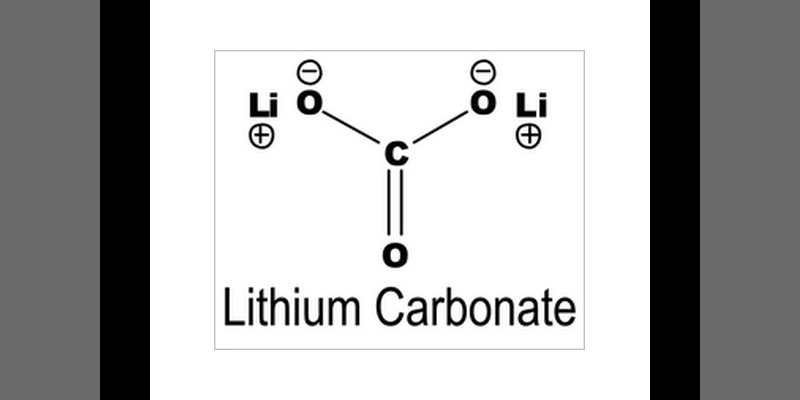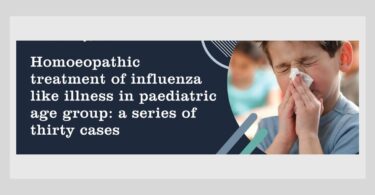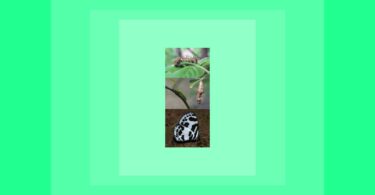This article first appeared in Homeopathy in Practice – autumn/winter 2017
I have always wondered why Lithium carbonicum is not a major polychrest in homeopathy given that its significance in orthodox medicine is almost iconic. This does not preclude the fact that its impact on physical organs such as the heart and kidneys can be harmful when taken in material doses – even though it is not a drug but a mineral and is found in the earth, in seawater, and in trace amounts in most plants and animals. In fact, no unique symptoms for this remedy appear in the ‘Mind’ section of the repertory, and very few in the physical symptom’s categories (Murphy, 2005). Its written picture is nebulous in what seems to be a very significant homeopathic remedy.
As a homeopathic remedy, Lithium carb acts by resetting the circadian clock. Today, many people suffer from seasonal affective disorder (SAD) in the northern hemisphere, so this remedy may easily come into its own in these cases with other vital confirmatory indications. (See rubric ‘Seasonal, affective disorder’, aur, carc, melat, phos, pineal, sol, stram, syph); (Lithium carb is not included in this rubric.)
Nowadays, many of us are exposed to considerable amounts of blue light through cell phones, computers, and the greater environment. I consider this to be another reason why this remedy is increasingly significant for the current age. Blue light may be an important contributing factor in why insomnia has reached almost epidemic proportions in society in recent years. Maternal melatonin crosses the placenta and enters the foetal circulation – therefore circadian sleep patterns actually begin before birth. Even though the foetus is not exposed to light from outside the womb and cannot tell when it is night or day, the mother is communicating this information to her baby. It has been found that these signals from the mother will actually stimulate the foetus to mirror their mother’s circadian cycles. (This emphasises the importance of treating the mother homeopathically before conception.) Most of Steven Reppert’s work at Harvard University was carried out on mice and rats, which mirror their mother’s circadian patterns quite closely to humans. It was found that the mother’s fluctuating melatonin levels signal the rhythm of life beyond the womb (Dement, 1999).
Jan Scholten, in his work on the periodic table, plots this remedy in Stage 1 of the carbon series (1993). This relates to issues such as ‘the ego’, ‘self-worth’, borderline, and ‘child’. He describes Lithium carb as ‘impulsive’, ‘changeable’, ‘weak-willed’, ‘suggestible’, ‘manic- depressive’, ‘a baby’, and ‘isolated’. However, Murphy’s repertory does not include Lithium carb in the following rubrics which, perhaps, it should:
- ‘changeable, fickle’ (total number of remedies 80) ACON, alum, aur, BELL, CALC-P, carc, cham, cimic, CINA, cocc, coff, CROC, IGN, kali-c, lach, lyc, MERC, mez, NUX-M, nux v, PETR, PLAT, PULS, sars, SEP, stann, stram, TUB, valer.
- ‘confidence, lacking, no self esteem’ (105) AMBR, aml-n, ANAC, arg-n, ars, AUR, BAR- C, bry, calc, CALC-F, CARC, chin, gels, kali-c, KALI-P, lac-c, LAC-H, LYC, med, nat-m, nux-v, PETR, phos, PSOR, puls, rhus-t, SIL, STAPH, thuj.
- ‘isolation, feelings’ (46) ALCO, anac, androc, anh, arg-n, AUR, lac-h, NAT-M, PLAT, PULS, THUJ.
- ‘weak, personality’ (5) aids, caust, LYC, sil, staph.
Lithium does, however, appear in the following rubrics, although in the bromatum derivative in the final rubric:
- ‘abandoned, forsaken, feelings’ (105) arg-n, ars, AUR, aur-m-n, aur-s, calc, carc, choc, cycl, ign, lach, LAC-H, (lith-c in plain type), mag-c, mag-m, MENY, merc, nat-c, NAT-MUR, phos, plat, PSOR, PULS, sac-alb, sep, stram, thuj.
- ‘bipolar, disorder’ (37) anac, aur, CARC, con, hyos, kali-br, LACH, LITH-C, MED, nat-s, STAPH, verat.
- ‘bipolar, disorder, arthritis, with’ (1) lith-c.
- ‘helplessness, feelings’ (43) ARS, aur, calad, ferr, GELS, lith-c, LYC, ph-ac, phos, PULS, SIL.
- ‘impulsive, behaviour’ (49) anac, androc, ARG-N, ars, aur, aur-m- n, cic, coloc, IGN, lith-c, med, nat-m, nux-v, podo, PULS, stram, tub.
- Sleep section: ‘insomnia, persistent’ (8) carc, coff, coffin, cupr-ar, kali-br, lith-brom, thuj, unan-n.
Remedies which compare with these distinguishing features include Anacardium, Aurum metallicum, Crocus sativa, Lycopodium (to which it is complementary), Mancinella, Mercurius vivus, and Pulsatilla.
It seems that people needing this and related remedies in Stage 1 of the periodic table have not yet stepped forward to meet their life’s challenges. Homeopathic philosophy confirms findings that those who do not reach out to others more easily succumb to mood disorders such as bi-polar disease – which is becoming increasingly prevalent at this time. Compounded with this, more and more people nowadays live alone with little face-to-face contact with others. Mental health issues are generally on the rise and medicinal drugs are proving to be ineffective and – at times – dangerous, not only to the sufferer but also to those around them through violent reactions.
Somatisation of these mood disorders may take place in the form of rheumatic symptoms, especially affecting the shoulders and small joints (fibromyalgia), which could be a reflex from the heart. This phenomenon occurs especially when little outlet for emotions is allowed, possibly from messages received from their carers when young, and is particularly the case in cultures with no awareness of the importance of emotional expression. It could be an issue of ‘alexithymia’ where no words for emotions can be found (Adalian, 2017). This can lead to possible pathology, especially in the form of different States on the Spectrum including addiction, ADHD, anorexia, OCD, and Alzheimer’s disease (especially with a history of depression, head injury, or medicinal drugs). Other remedies which compare here include Helleborusniger, Natrum sulphuricum, and Rhus toxicodendron. This is why emotional life needs to be explored in case-taking when patients present with such physical symptoms.
Despite lack of emotional expression, there is marked over-sensitivity on the physical level in Lithium carb (as also seen in Mercurius vivus). This contributes to their distance from other people as they prefer to suffer in silence. A manic phase may take over in the form of ritualistic behaviour. Again, this remedy could well be added to the 12 remedies in the appropriate rubric ‘ritualistic, behaviour’. The two remedies in italics are Arg nit and Rhus tox. These symptoms are a sign of the syphilitic miasm, along with ‘aggravation at night’ – like Aurum metallicum and Mercurius vivus. The overall symptoms also suggest an affinity with the sycotic miasm.
Chronic cystitis and retention of urine can occur. (Lithium carb appears in the rubric for cystitis in plain type.) In Traditional Chinese Medicine (TCM), the bladder symbolises grief and it is no surprise that this inexpressive remedy manifests such symptoms. Like the rheumatic symptoms, grief may be manifested through the heart connection in this remedy picture. If depression is treated when the individual is young, many issues can be circumvented later in life at vital stages of development. A rising issue is post-natal depression which can affect future generations if left untreated. Lithium carb does not occur in the following rubric, but I believe there is a good case for its inclusion, and it should also be considered for post-natal psychosis: – ‘depression, childbirth, after’ (24) agn, anac, aur, aur-m, cimic, con, kali-br, lach, lil-t, psor, puls, SEP, SULPH, tub, verat, verat-v. Lithium carb could be added to the rubric for: ‘insanity, childbirth, after’ (36) aur, bell, camph, cann-i, chlol, cimic, cupr, cupr-acet, hyos, kali-bi, lyc, nux-v, petr, plat, puls, sec, stram, sulph, verat. This pathology could mean separation between the mother and child (during conventional treatment) which may create bonding issues later in their joint relationship.
Other known indications for Lithium carb in its material form include: Migraines, chronic headaches, cluster headaches, hyperthyroidism, insomnia, pre- menstrual syndrome, menopause difficulties, and strokes. People who live in high lithium areas live longer, with less criminality, fewer suicides, and better general mental health, enhancing serotonin production. Lithium is believed to reduce brain shrinkage by stimulating the brain cells. It also helps to detoxify heavy metals including aluminium, arsenic, cadmium, lead, and mercury (Montana, 2016). Patients needing this remedy may benefit from receiving fatty acids with their treatment, such is the chronic shortfall they suffer from in this depletion.
Conclusion
Apart from its possible application in constitutional treatment, it could be useful for weaning patients off not only lithium in drugs, but also other psychiatric drugs such as Prozac. Other derivatives include Lithium bromatum, Lithium fluoratum, Lithium iodatum, and Lithium muriaticum. The homeopathic back-up of Lithium carb could prevent suicide or violence in such cases as this transition takes place. This is another reason why Lithium carb as a homeopathic remedy should be upgraded in the understanding of homeopaths to support not only the suffering individual, but also to protect society at large.
Suggested additions of Lithium carbonicum to Rubrics of the Homeopathic Clinical Repertory:
Mind section of the Repertory
- ‘bipolar, disorder, head, injury, after’ – nat-s (only remedy appearing – in plain type).
- ‘changeable, fickle’ (total number of remedies 80) ACON, alum, aur, BELL, CALC-P, carc, cham, cimic, CINA, cocc, coff, CROC, IGN, kali-c, lach, lyc, MERC, mez, NUX-M, nux v, PETR, PLAT, PULS, sars, SEP, stann, stram, TUB, valer.
- ‘childish’ – agar, aloe, ANAC, apis, BELL, bufo, carbn-s, CIC, croc, hell, HYOS, ign, nat-c, nux-m, op, ph-ac, stram.
- ‘confidence, lacking, no self esteem’ (105) AMBR, aml-n, ANAC, arg-n, ars, AUR, BAR-C, bry, calc, CALC-F, CARC, chin, gels, kali-c, KALI-P, lac-c, LAC-H, LYC, med, nat-m, nux-v, PETR, phos, PSOR, puls, rhus-t, SIL, STAPH, thuj.
- ‘depression, childbirth, after’ – agn, anac, aur, aur-m, cimic, con, kali- br, lach, lil-t, psor, puls, SEP, SULPH, tub, verat, verat-v.
- ‘insanity, childbirth, after’ – aur, bell, camph, cann-i, chlol, cimic, cupr, cupr-acet, kali-bi, lyc, nux-v, petr, plat, puls, sec, stram, sulph, verat.
- ‘isolation, feelings’ – ALCO, anac, androc, anh, arg-n, AUR, lac-h, NAT-M, PLAT, PULS, THUJ.
- ‘ritualistic, behaviour’ – arg-n, rhus-t.
- ‘seasonal, affective disorder’ – aur, carc, melat, phos, pineal, sol, stram, syph.
- ‘weak, personality’ – aids, caust, LYC, sil, staph.
Head section of the Repertory
- ‘injuries, blows’ – anac, ARN, BAD, bell, calc, calc-p, carc, cic, cocc, con, glon, ham, HELL, hyos, HYPER, iod, kali-p, lach, led, lob, mang, NAT-S, nux-v, puls, rhus-t, ruta, sep, sil, spig, symph, teucr, verat.
Rubrics including Lithium carb –
Mind section of the Repertory
- ‘abandoned, forsaken, feelings’ – arg-n, ars, AUR, aur-m-n, aur-s, calc, carc, choc, cycl, ign, LAC-H, lach, lith-c (included in plain type), mag- c, mag-m, MENY, merc, nat-c, NAT-MUR, phos, plat, PSOR, PULS, sac-alb, sep, stram, thuj.
- ‘bipolar, disorder’ – anac, aur, CAR, con, hyos, kali-br, LACH, LITH- C (included in black type), MED, nat-s, STAPH, verat.
- ‘bipolar, disorder, arthritis, with’ – lith-c (only remedy appearing in plain type).
- ‘helplessness, feelings’ – ARS, aur, calad, ferr, GELS, lith-c (included in plain type), LYC, ph-ac, phos, PULS, SIL.
- ‘impulsive, behaviour’ – anac, androc, ARG-N, ars, aur, aur-m-n, coloc, IGN, lith-c (included in plain type), med, nat-m, podo, PULS, stram, tub.
Bladder section of the Repertory
- ‘cystitis, bladder, inflammation – lith-c (included in plain type).
Sleep section of the Repertory
- – ‘insomnia, persistent’ – carc, coff, coffin, cupr-ar, kali-br, lith-brom (not lith-c), thuj, uran-n.
Note that Aurum is the highest scoring contender with Lithium carbonicum. It shares with it many of the emotional symptoms as well as the symptoms of cluster headaches and those related to the heart. Both remedies match the syphilitic miasm in their manifestation. It is significant that Lithium carbonicum appears in certain rubrics although usually only in plain type. This is because it is under-represented in the repertory.
REFERENCES
Adalian E (2017) Touching Base with Trauma. Reaching Across the Generations: A Three-Dimensional Homeopathic Perspective. Writersworld.
Dement W, Vaughan C (1999) The Promise of Sleep, Macmillan.
Montana C (2016) ‘Lithium: Miracle-Gro for the Brain’ What Doctors Don’t Tell You, Vol. 27, Issue 7: www.wddty.com/magazine/2016/october/lithium-miracle-gro-for-the-brain.html
Murphy R (2005), Homeopathic Clinical Repertory, 3rd Edn. Lotus Health Institute
Scholten J (1993) Homeopathy and Minerals, Stichting Alonissos







Dear Elizabeth,
My son has a problem with his circadian rhythm where he cannot fall asleep until 3 am or so. How would I dose this remedy for him? What would be the potency and the frequency?
Sylvia H.
Thank you very much for your description of this remedy which I enjoyed to read. I agree that this remedy has to be added in our repertories.
The Bladder is generally not associated with grief in Traditional Chinese medicine as stated in the article. It is the Lungs that are associated with grief. There are however, relationships between the Lungs and the Bladder in TCM in that the Lungs are said to send fluids downward to the Bladder. The Lungs and the Bladder are also opposite in their respective locations on the Chinese clock in terms of which acupuncture meridian is most active at a particular time of day; the Lung meridian being most active during 3-5 a.m. and the Bladder between 3-5 p.m..
Lithium can be used for patients who have a very limited range of emotions. For example it is difficult for them to feel excited about anything or sad. They suffer from indifference and if you ask them what they are really feeling, they often don’t know what you are talking about. The best keynote is the arthritic nodules on the finger joints.
Hi I have a 22 year old autistic daughter and have been reading up, about Lithium and would like to try a homeopathic version. Can you point me in the right direction. regards